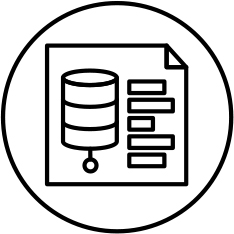Dividend-paying stocks have long contributed to investors’ total returns and served as a source of potential income from an investment portfolio. We believe successful dividend investing requires a careful approach: one that pursues attractive yields while avoiding the risks associated with dividend investing.
In this paper, we offer a closer look at some of those risks. We then explain the methodology the underlying index uses that the FlexShares Quality Dividend Dynamic Index Fund (QDYN) tracks in an attempt to invest in stocks with dividend yields1 that are both high and sustainable while taking a more defensive approach to the market.

THE CHALLENGES OF DIVIDEND INVESTING
For decades, investors have looked beyond price appreciation to stock dividends as another source of return in their equity portfolios. In recent years, persistently low interest rates have made dividend income even more valuable as investors have sought an income-producing alternative to traditional fixed-income investments.
As dividend income becomes more important to investors’ overall portfolios, it’s critical to avoid common risks that can threaten their dividend income stream. It can be tempting to simply choose stocks with the highest dividend yield in an effort to boost a portfolio’s total return and income potential—but those high yields may come with higher risks.
 Primarily, investors must avoid so-called “dividend traps.” High dividend yields often result from falling stock prices, either due to company-specific financial challenges or to broader market or macroeconomic threats. Those problems may cause companies to reduce or suspend their future dividends, undercutting the expected benefit investors look for from dividend-paying equities. What’s more, dividend-paying stocks may be concentrated in specific sectors and industries, so focusing on them may lead to portfolios that are under-diversified and overweight in those particular areas.
Primarily, investors must avoid so-called “dividend traps.” High dividend yields often result from falling stock prices, either due to company-specific financial challenges or to broader market or macroeconomic threats. Those problems may cause companies to reduce or suspend their future dividends, undercutting the expected benefit investors look for from dividend-paying equities. What’s more, dividend-paying stocks may be concentrated in specific sectors and industries, so focusing on them may lead to portfolios that are under-diversified and overweight in those particular areas.
In our view, the key to successful dividend investing is to focus not just on high dividend yields, but on sustainable dividend yields—in other words, dividend payments that are likely to continue in the future.2 To do that, investors should consider a two-pronged approach:

THE FLEXSHARES SOLUTION: MEASURING DIVIDEND QUALITY IN EVERY MARKET SECTOR
 The FlexShares Quality Dividend Dynamic Index Fund (QDYN) is an ETF that seeks to avoid common risks associated with dividend investing by tracking a custom index, the Northern Trust Quality Dividend Dynamic Index3. Northern Trust Investments Inc. (NTI) is the investment adviser for FlexShares ETFs.
The FlexShares Quality Dividend Dynamic Index Fund (QDYN) is an ETF that seeks to avoid common risks associated with dividend investing by tracking a custom index, the Northern Trust Quality Dividend Dynamic Index3. Northern Trust Investments Inc. (NTI) is the investment adviser for FlexShares ETFs.
Starting with the Parent Index, the Northern Trust 1250 Index4, which represents 1,250 large and mid-capitalization U.S. public companies, NTI first eliminates all non-dividend paying stocks. Then, they apply a multi-faceted Dividend Quality Score (DQS) to measure a company’s core financial health and evaluate whether it may increase (or decrease) its future dividends.
The DQS score evaluates dividend-paying equities across all these lenses and ranks companies in each sector. This approach helps ensure an “apples-to-apples” comparison because different financial characteristics may be appropriate in different sectors. It also identifies quality companies in every sector, supporting diversification in the initial index construction process.
NTI ranks all stocks in a sector by DQS score and divides the list into quintiles, with quintile 1 comprising the highest-ranked companies and quintile 5 comprising the lowest-ranked firms. The index eliminates all stocks in quintile 5, and uses an optimization process in an effort to maximize the overall quality score relative to the Parent Index and attain an aggregate dividend yield in excess of the Parent Index while targeting an aggregate beta5 between 1.0 to 1.5 times that of the Parent Index. The index then diversifies holdings according to rules such as maximum overweights/underweights for individual stocks, sectors and industries.
HARNESSING QUALITY AND YIELD FOR GREATER CONFIDENCE
 The DQS approach to underlying index construction recognizes the real-world goals behind dividend investing strategies—namely, to generate sustainable income from a portfolio and to harness the long-term return potential of dividend-paying stocks.
The DQS approach to underlying index construction recognizes the real-world goals behind dividend investing strategies—namely, to generate sustainable income from a portfolio and to harness the long-term return potential of dividend-paying stocks.
This rules-based, repeatable process is designed to help avoid dividend traps and sector biases. Evaluating a company’s financial health through several lenses and ranking them with other companies in their sectors/industries can provide a strong sense of how well-positioned a dividend-paying company may be for success—and how protected future dividends could be.
This approach doesn’t assume that past dividend history is an indicator of continued high dividend yields. And by relying on publicly available financial data, relatively new dividend-paying companies can be evaluated alongside stocks that have paid dividends for years. Our research suggests that the most important characteristic of each stock held in the FlexShares Quality Dividend Dynamic Index Fund (QDYN) is that the company has a solid economic foundation to support future dividend payments.
CONCLUSION
While dividend investing is a well-established equity investment strategy, blindly pursuing stocks with the highest dividend yields may be dangerous in the long run. High dividend yields may mask underlying problems—such as weak stock prices due to poor financial performance—that could result in lower future dividend payments.
The FlexShares Quality Dividend Dynamic Index Fund (QDYN) helps investors avoid common risks of dividend investing by selecting stocks with both high dividend yields and strong underlying fundamentals while attempting to utilize an aggressive slant. We believe this quality-focused approach offers a method for pursuing a dividend investing strategy that emphasizes sustainable dividend yields to help meet investors’ goals for income and total return.
FOOTNOTES
1 Dividend yield is a financial ratio that indicates how much a company pays out in dividends each year relative to its share price. Dividend yield is represented as a percentage and can be calculated by dividing the dollar value of dividends paid in a given year per share of stock held by the dollar value of one share of stock.
2 Dividends represent past performance, and there is no guarantee they will continue to be paid.
3 The Northern Trust Quality Dividend Dynamic Index is designed to provide exposure to a high-quality income-oriented portfolio of long-only U.S. equity securities, with an emphasis on long-term capital growth and a targeted overall beta that is generally between 1.0 to 1.5 times that of the Northern Trust 1250 Index.
4 The Northern Trust 1250 Index is designed to provide broad-based exposure to the U.S. equity markets, with a bias toward large and mid-capitalization companies. In an effort to include a greater number of dividend-paying companies, a constituent limit of 1250 is used at the time of each annual reconstitution.
5 Beta is a statistical measure of the volatility, or sensitivity, of rates of return on a portfolio or security compared to a market index. The beta for an ETF measures the expected change in return of the ETF relative to the return of a designated index. By definition, the beta of the Standard & Poor’s (S&P) 500 Index is 1.00. Accordingly, a fund with a 1.10 beta is expected to perform 10% better than the S&P 500 Index in rising markets and 10% worse in falling markets.
